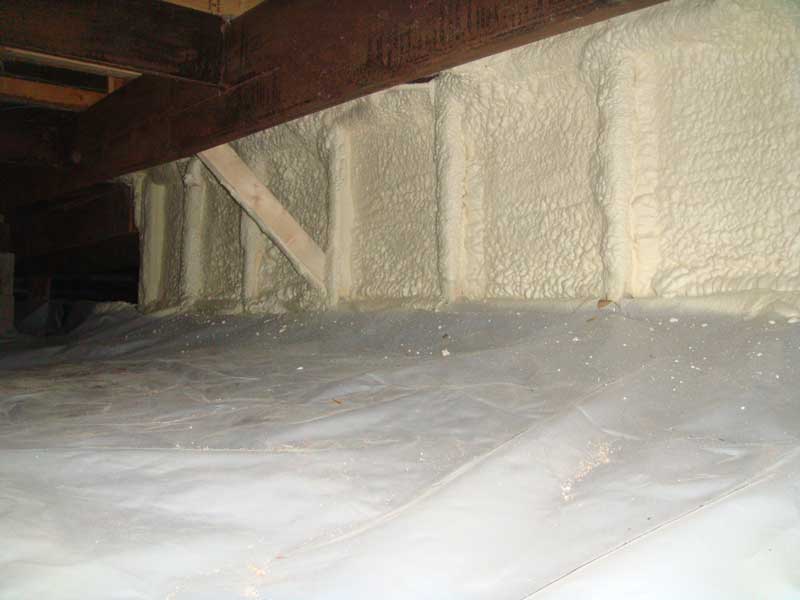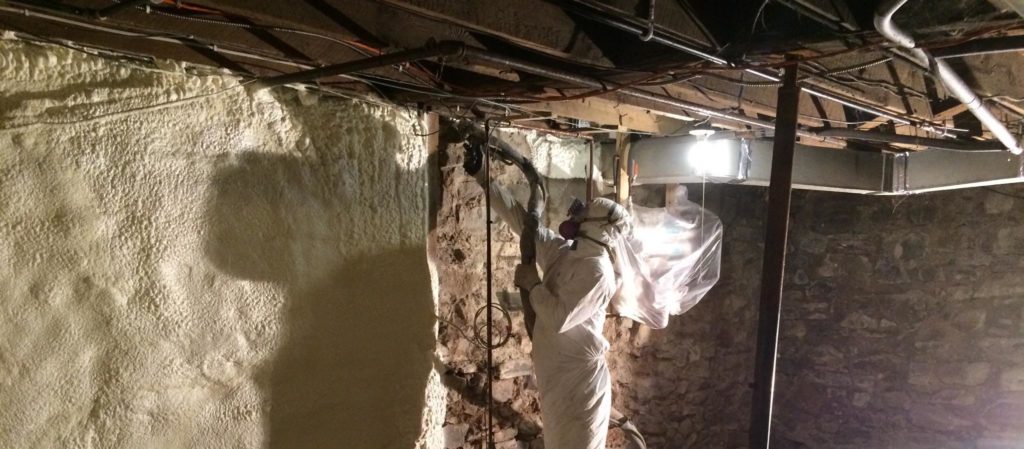Should You Seal Your Crawl Space?
There is no question that if your home was built more than 10 years ago, and you haven’t upgraded the insulation in the attic area, it likely has an insulation value that does not meet modern-day building code. If you peek into your attic area and see insulation, that doesn’t mean it is adequate. When using a loose fill insulation, you need to install the (cellulose) up to 15 inches thick to meet the New York State code of R-49. When using a blow-in fiberglass product, you need as much as 18 inches to reach an R-49. And while air-sealing has been in regular practice for the past several years, there are still many contractors who do not follow the practice. This procedure is worth doing, even if you aren’t in need of more insulation.
The cost of spray foam insulation is one of the top worries for our customers.
We have a saying: “Estimates are free; heating is not.” When you want to see what your home insulation will cost, the best way is to start with a FREE Estimate. We’ll give you a list of all the costs, and your options: insulation type, areas that are important to insulate, and more.
We’ll compare costs with Spray Polyurethane Foam (SPF) in your attic and walls. Our customers love the low cost of SPF. We’ve even had some customers compare the cost of applying spray foam by themselves to the cost of hiring us to do it. Every time, it has turned out to cost less to hire us!
If needed, we can even talk about treating only one (or only sections) of your home or building at a time, so you can spread out the work—and your costs—over time. Tell us your goals, and we’ll work with you to make sure you get everything you want for your budget.
Crawl Space Issues
Crawl spaces can be useful, but they can also harbor mold, moisture, dampness, and experience high humidity levels (not to mention critters or insects). All of these will affect the indoor air quality of your home, can have a negative impact on your family’s health, and can have a destructive effect on the structure, including rotted joists, subfloor, sills, and more.
If there is standing water in the crawl space—depending on the severity—we would recommend remediation for that before we insulate. Our work will definitely fix the drafts and other unpleasant effects listed above.

Best Way to Insulate a Crawl Space
A sealed, encapsulated crawl space requires several steps. Homeowners often seek insulation for the crawl space ceiling, though this is not always the best approach. Although every space is different, we normally install vapor barriers along dirt floors, then seal the vapor barrier tight to the walls, and around other obstructions and penetrations, like piers and posts. This brings the crawl space into the “conditioned” area, and seals all the cold out, leaving you with the bonus of a clean crawl space.
We can access crawl spaces with as little height clearance as 18 inches.
Next is insulation. If you have ductwork in these areas, there are different ways to handle sealing it than simply installing fiberglass to the underside of the floor (the crawl space ceiling). In order to bring the ductwork into the heated/conditioned space, we would insulate the crawl space walls. This is the most economical and beneficial approach.
If you experience frozen water pipes in your crawl space, we can remedy the problem with spray foam insulation. Not only will you have a drier, warmer space, but we eliminate the nuisance of frozen water lines.
All of this means a more comfortable home, lower energy bills, healthier air quality, and greater peace of mind.
We can only decide what’s best for your crawl space by inspecting it in person. We’ll give you a clear explanation of the work, trade-offs, and options.

Get A Free Estimate
We've got you covered
Insulation Services
FreeInsulation
The EmPower+ New York program provides free energy efficiency solutions for income-eligible New York residents. Available for both homeowners and renters.